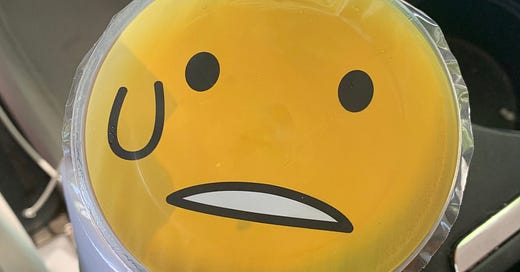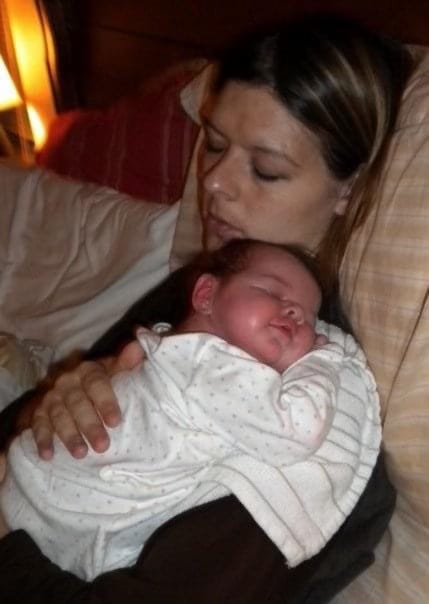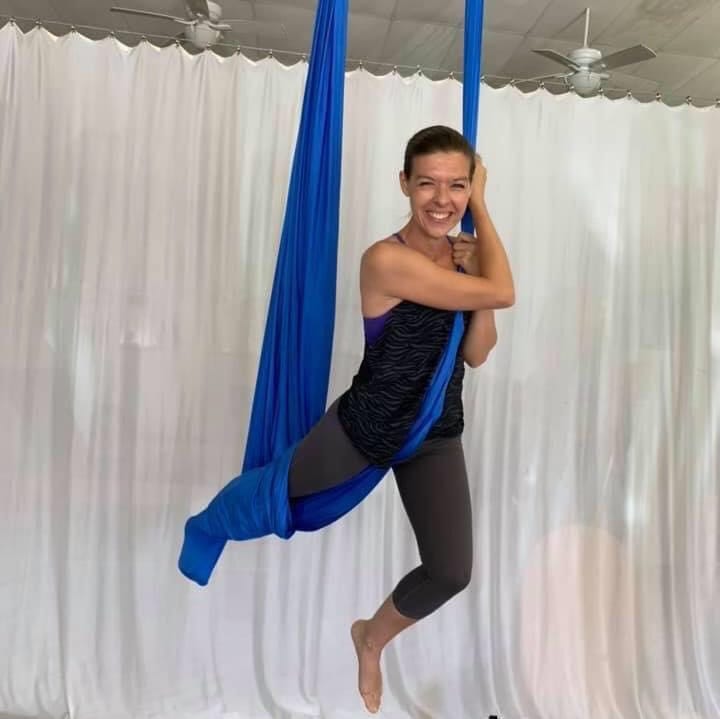My Life as a Disembodied Head
Can we really live in our minds and ignore our bodies? I was out to prove that it was possible.
When I was a springboard diver back in my early high school days, my coach told me, “You’d be a great diver if you didn’t have a head.”
Cool. Thanks coach, I’ll see what I can do about that.
He didn’t say it because my melon came dangerously close to making contact with a springboard on more than one occasion. He said it because I overthought everything I did and would not allow muscle memory, from hours of repetition, to do its magic. I would also overthink more complicated dives, often psyching myself out rather than trusting that I already knew all of the mechanics to give it a go.
I remember in one diving meet where I was so in my head that mid-approach down the board (those few steps before the board flings you into the air), I heard a cough in the crowd and completely froze. My brain got distracted and my body couldn’t keep going without being micromanaged at each step. I stood embarrassed at the end of the 1-meter, turned around, walked back, and prepared to do the dive again— now at a significantly lower score due to the balk.
Since my life as a disembodied head wasn’t going anywhere, I quit diving to go for other things. While never truly extreme in any behaviors, I found in much of my adult life I craved strong sensory experiences. If I listened to music, it was loud. If I lifted weights, they were often too heavy for me. If I got a massage, I wanted the “no pain no gain” deep tissue work.
I wanted to ride the biggest rollercoasters just to feel that “butterflies in the stomach” sensation. When I drank, it was rarely to enjoy the beverage but rather to feel the effects of alcohol. When I returned to sports it was things like broomball (think ice hockey but with sneakers on ice instead of skates and a big rubber ball instead of a puck) and martial arts— sports that often left me with bruises and other super neat-o injuries.
When I became pregnant with my second child, I decided to have a craniosacral therapy session with a magical wonder named Agnieszka (more about her in my book). Within seconds of gently placing her hands on the top of my feet she informed me that my body was trapped in fight-or-flight response.
I was shocked. I was offended. Here I thought I was being chill and relaxed, and here she was assessing the quality of my nervous system and cranial rhythm and informing me that I, in fact, had zero idea what chill and relaxed felt like. This body of mine was a foreign being… in which I was now growing another being.
So what happens when we live outside of our bodies?
We lose our ability to sense important information that we need to process decisions. I don’t just mean in the physical sense of like, “Hey jackass, stop doing that exercise. You’re hurting yourself!” or “Put down the ghost pepper sauce unless you love acid reflux.” Connecting with and consulting with our bodies improves our ability to make important decisions about our lives.
As a disembodied head, I could only make decisions cerebrally. The only voice I heard was my ego. When I tried to make a decision, I had a difficult time discerning what I actually wanted and instead would default to the ego’s recommendation of the action that would allow me to stay safe, often by conforming to what society wanted or what I thought individual people wanted. My decision-making fed the perfectionism and people-pleasing that my ego thrived on, but often didn’t align with what I truly wanted.
It’s no coincidence that going to school for massage therapy was an important start to my self-realization process. Learning about therapeutic touch, a different quality of touch than sexual or violent touch, felt like a crash course reintroduction to the body I once inhabited. (It also helped that massage therapy school was the first place I met an “out” lesbian and realized that they weren’t just magical mythological creatures).
Through decades of therapeutic massage and somatoemotional bodywork like craniosacral therapy, I learned how to pick up on the subtle signals that our bodies send us. Through meditation and grounding, I have learned how to communicate with my body to bring it back into a healthier state when my heart is racing or panic is taking over. More gentle exercise, including walking and yoga bring awareness to different physical parts of my whole being.
Most importantly, reintegrating with my body has allowed me to hear the long-forgotten voice of intuition. Now, when I make decisions, I can still consult my ego brain but I also have the wisdom of where and how I feel the decision in my body. It’s usually my body that gives me the clearest answer if something is a “YES!!!” or “abso-fucking-lutely no.”
Even still, fostering the loving connection with our bodies is a process that takes continuous work. I find when I have over-served myself a heaping plate of why-did-I-take-on-all-these-work-projects, I attempt to cut off from my body more to ignore when it’s tired, hungry, or needs to pee between Zoom meetings. The difference is that now I feel my body more and cannot ignore the signals as I used to just a few years ago. When I find myself getting overstimulated, I take time out to walk barefoot in my yard and smell my tomato plants or move mulch in piles around my banana trees. Sometimes I braid the hair of squirrels or spoon alligators for the sensory experience.
Okay, fine. It ends at banana trees. The point is, once you’re in your body and you love that body, you no longer look to escape it. Doing that means listening to it and heeding its warnings. In return it will provide you so much more life guidance than your brain alone ever could. And fully embodied living feels so darn good!
*Important note: through my own work as a craniosacral therapy practitioner, I have worked with a handful of clients who experience physical violence and medical or sexual trauma which has made inhabiting their bodies feel like an unsafe place. Everyone’s ability to connect with and love their bodies is shaped by their unique lived experiences. This story is not meant to shame anyone who is feeling that a healthy relationship with their body is not something they’re ready for. There is no one way to live.
Each person. In their own time. And in their own way.








